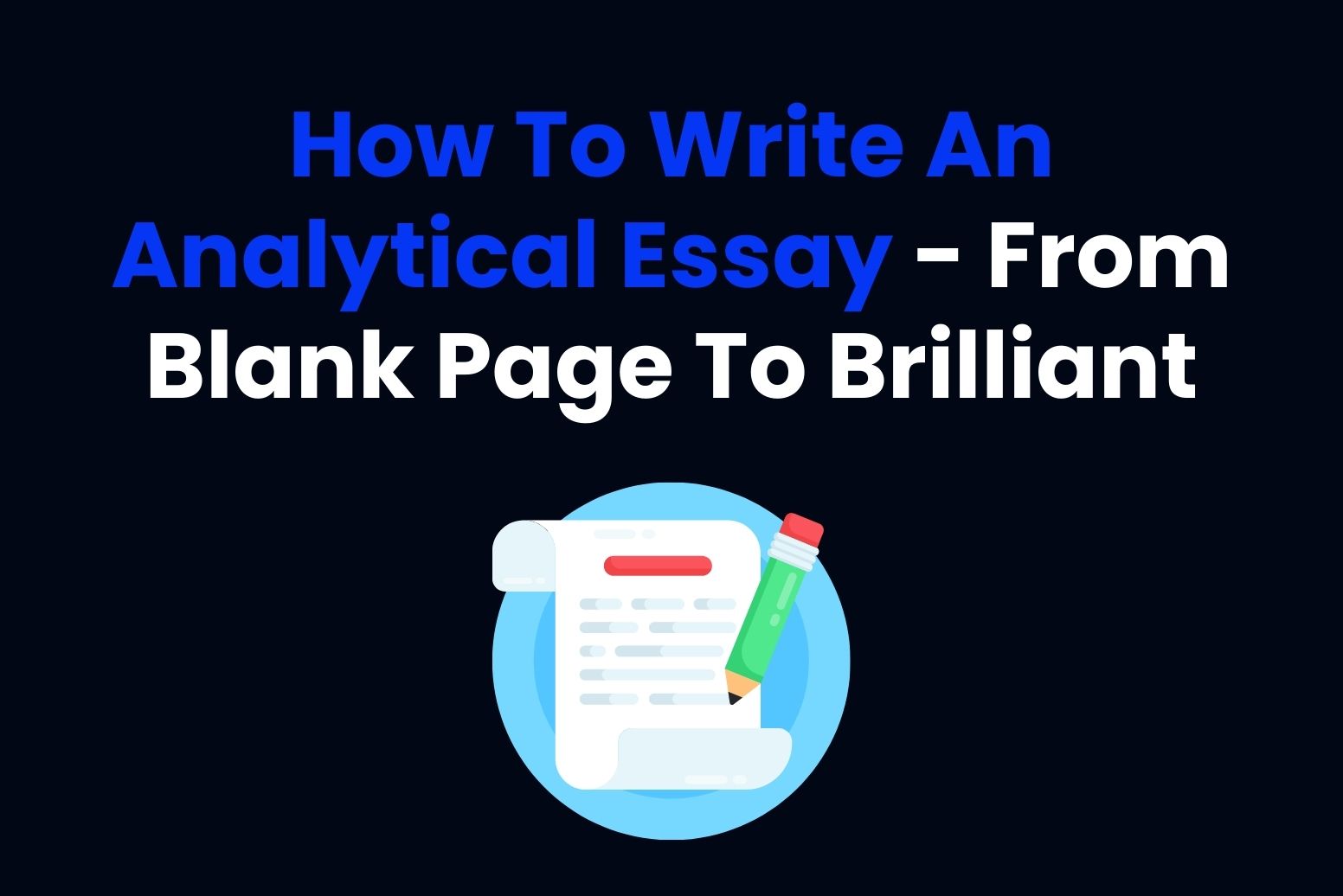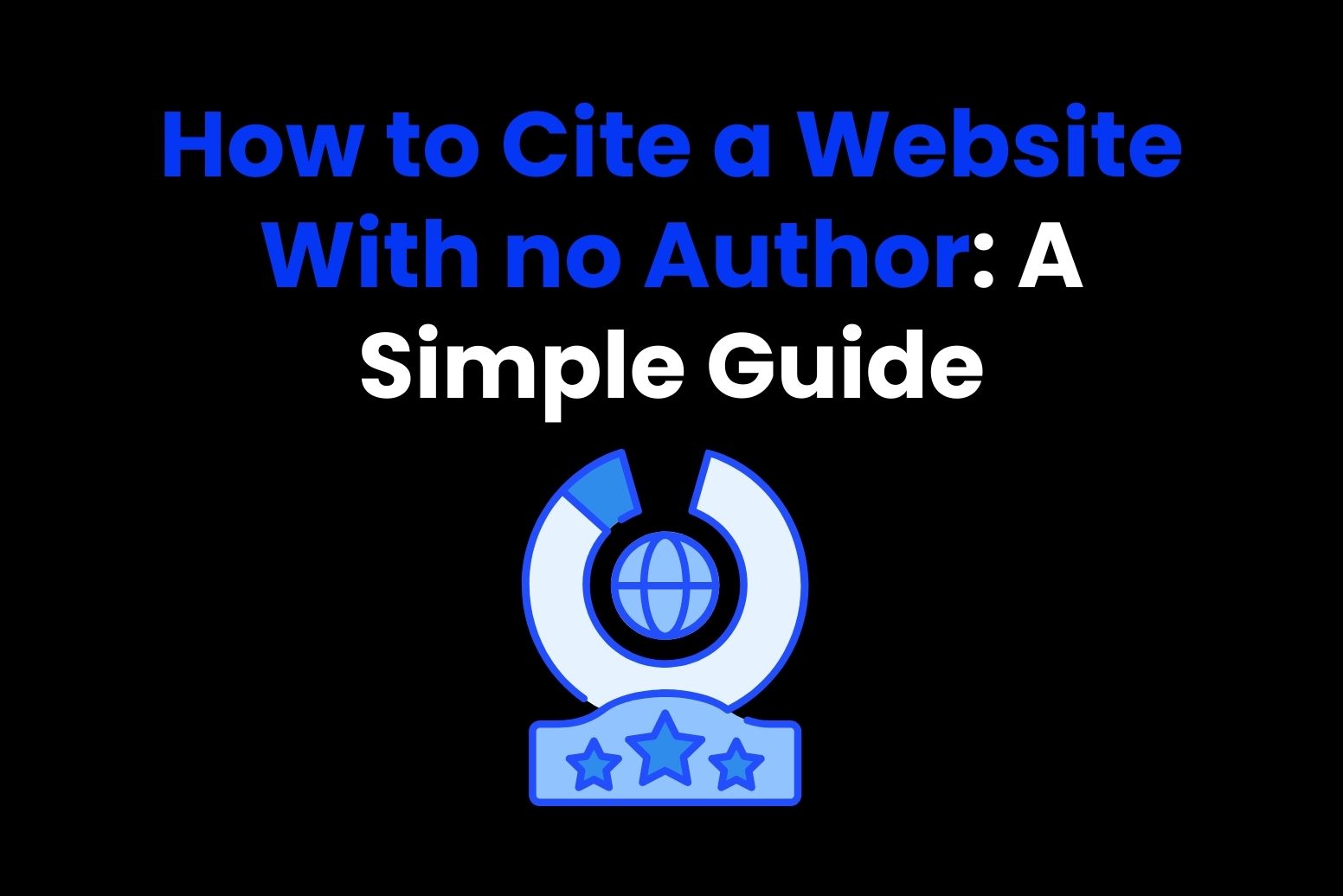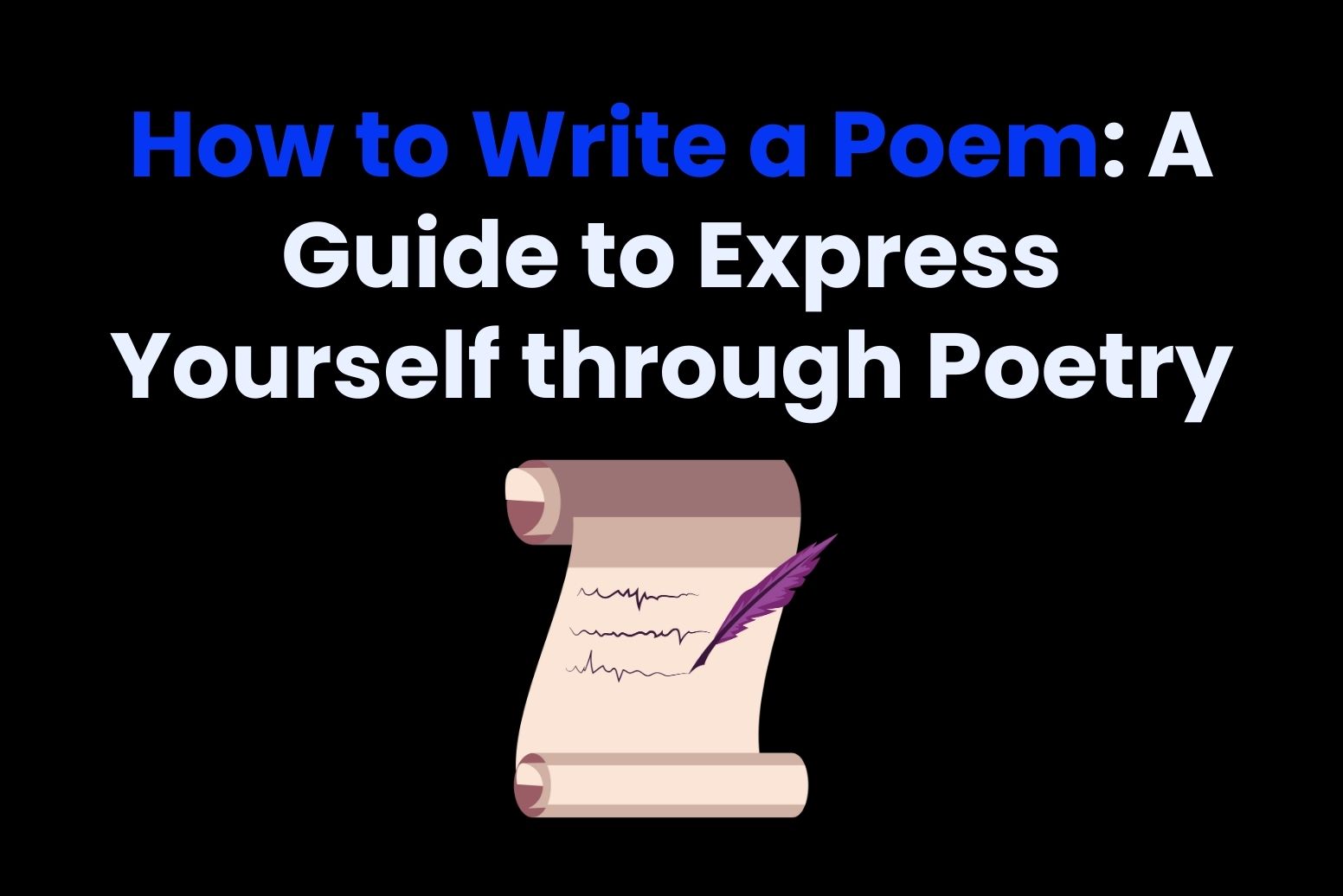Did you know that over 80% of high school and college students admit they struggle with writing essays, especially analytical ones? If you’re one of them, don’t worry; you’re not alone! If you learn how to write an analytical essay, it will be helpful for your school and also make you a better thinker and communicator.
An analytical essay is all about breaking things down, understanding them better, and explaining your ideas clearly. This guide will take you step-by-step through how to write an analytical essay, making the process less daunting. By the end, you’ll feel confident enough to tackle any analytical essay that comes your way! Let’s start!

What Is an Analytical Essay?
An analytical essay is a deep dive into a subject—be it a book, movie, event, or even a process. The goal isn’t just to summarize but to analyze how and why something works. Instead of just saying what happens, you explain how and why it happens.
For instance, instead of simply saying, “The movie was about survival,” an analytical essay might explore, “How the movie’s protagonist uses resilience and adaptability to survive in extreme conditions.”
Different Types Of Analytical Essays
Here are a few different types of analytical essays that you need to know about:
Literary Analysis
In a literary analysis essay, you break down a piece of literature, whether it’s a novel, short story, or poem, and examine its deeper meaning. You might analyze the themes, character motivations, literary devices, or the symbolism the author uses.
Rhetorical Analysis
When you read a speech, an advertisement, or even a political tweet, rhetorical analysis helps you break down how the author is trying to convince you to think a certain way. But instead of just focusing on the “what” they are saying, you look at the “how” and “why” behind it. In a rhetorical analysis essay, you analyze how the speaker or writer uses ethos (credibility), pathos (emotions), and logos (logic) to influence the audience.
Process Analysis
Have you ever read an instruction manual or watched a tutorial on YouTube, and thought, “Okay, I get the steps, but how do I actually do this?” A process analysis essay is your chance to break down a process in simple terms, step-by-step, to help someone else understand how to do it. This type of essay is all about explaining how something works or how to complete a task.
Comparative Analysis
Imagine you’re sitting at a restaurant, deciding between two amazing dishes: the burger or the pizza. You can’t have both, so you need to compare the two and decide which one is better for your taste buds. That’s exactly what a comparative analysis essay does—except, instead of comparing food, you’re comparing two subjects, ideas, texts, or events. A comparative analysis essay takes two different things and explores their similarities and differences.
What Makes A Good Analytical Essay?
In your essay, the thesis statement, evidence, and analysis are those tasty layers that make everything work together beautifully. Let’s break it down:
Thesis Statement:
This is your main idea or argument. Your thesis is like the main character of your story. It’s the big idea you want to prove or explain throughout your essay.
Here’s what makes a thesis statement strong:
- Specific: Don’t be vague. Instead of saying, “Social media has effects,” try, “Social media affects mental health by increasing anxiety.”
- Debatable: A good thesis isn’t just a fact; it’s an idea someone could agree or disagree with. This invites discussion and makes your essay more interesting.
Pro tip: Before you start writing, ask yourself, “What do I really want to say about this topic?” That’s your thesis!
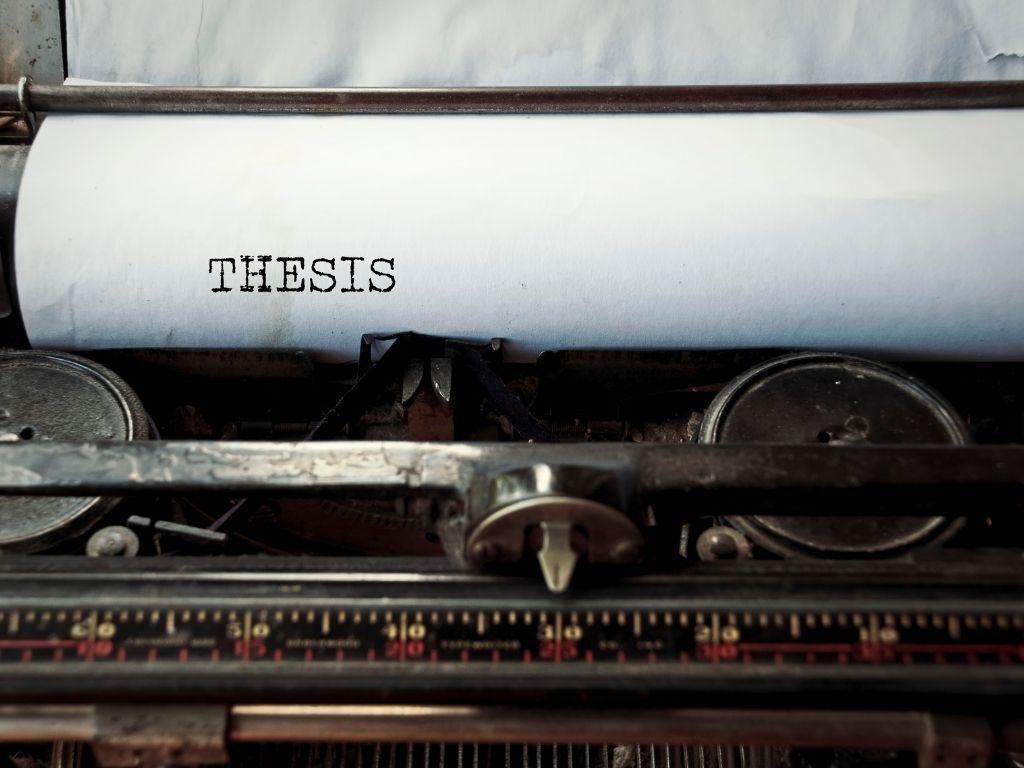
Evidence:
Imagine making a bold claim, like “Reading boosts creativity,” and someone asks, “How do you know?” This is where evidence comes in. These are facts, quotes, or examples that support your thesis. It’s the proof that backs up your thesis and makes your argument believable.
Good evidence can include:
- Quotes: Words from experts, books, or characters you’re analyzing.
- Data and Statistics: Numbers don’t lie—use them to strengthen your points.
- Examples: Specific moments from a book, movie, or real life that support your idea.
Analysis:
Analysis connects your evidence back to your thesis and explains why it matters. Without analysis, your essay can feel like a list of random facts.
Think of it like this:
- Evidence is what happened.
- Analysis is why it happened and why it matters.
Pro tip: Always ask yourself, “So what?” after presenting evidence. Why should the reader care? That’s your analysis!
Preparing How To Write An Analytical Essay
Before diving into writing, it’s essential to prepare properly. Think of this phase as building the foundation for a house; you need the foundation to be strong and solid, or everything else might crumble. Let’s break it into simple steps to get you essay-ready.
Step 1: Pick a Great Topic
The topic is your starting point, so make it count! Choose something that genuinely sparks your curiosity or interests you. A great topic is specific enough to analyze but broad enough to give you plenty to write about.
Pro Tip: If you’re allowed to pick your topic, think about your audience. What would interest them? If you’re writing for school, a unique angle could impress your teacher!
Step 2: Do Your Research
Here’s where you gather your tools. Gather facts, quotes, or data from reliable sources like books, articles, and trusted websites. Additionally, try to make notes so everything is easy to find later.
What to do:
- Use books, academic journals, and reputable websites (think .edu, .gov, or trusted publications).
- Take notes as you go, organizing them by themes or arguments. This will save you from scrambling later.
- Look for quotes, data, and examples that directly support your thesis idea.
Step 3: Write Your Thesis Statement
Now that you’ve got a topic and some research, it’s time to craft your thesis. It tells the reader what you’re analyzing and what you’re trying to prove. Your thesis is the heart of your essay, but keep it short, clear, and debatable. Alternatively, you can use a thesis statement generator to write a thesis statement as well, just make sure you cross check it!
Step 4: Create an Outline
An outline is like a map for your essay. It helps you organize your ideas and keeps you from getting lost while writing.
How to create an outline:
- Introduction: Write down your hook, thesis statement, and a brief mention of what you’ll cover.
- Body paragraphs: Break these into sections, each focusing on a specific point or argument. Under each section, jot down evidence and analysis ideas.
- Conclusion: Plan how you’ll summarize your main points and restate your thesis in a powerful way.

How To Write An Analytical Essay In 5 Easy Steps
Now, it is time to get moving, so here’s how to write an analytical essay step-by-step:
Start With A Strong Introduction
Your introduction is like the first impression your essay makes so it needs to be memorable. Think of it as setting the stage for the reader. Start with a hook that grabs attention instantly. It could be a surprising fact, a thought-provoking question, or even a powerful quote that ties to your topic. Then, give a sneak peek of what your essay will discuss without spilling all the beans.
For instance:
“Did you know that The Hunger Games has sold over 65 million copies worldwide?”
How is that for a hook? This type of introduction doesn’t just state the topic but it also makes the reader curious and excited to keep reading.
Build Clear And Strong Body Paragraphs
The body of your essay is where the magic happens. Each paragraph should be laser-focused on one idea and follow a clear structure. Here’s how you should go about it:
- Topic Sentence: Set the tone for the paragraph by introducing the main idea.
- Evidence: Include a fact, quote, or example that supports your idea.
- Analysis: Dive deep. Explain why the evidence matters and how it ties back to your thesis.
Each paragraph should feel like a mini-essay that builds your argument piece by piece.
Use Evidence To Back Up Your Points
Evidence is the backbone of any analytical essay. It makes your arguments credible and compelling. But don’t just throw quotes or facts at your reader; take your time to explain why they matter. The key is balance. Try to use just enough evidence to support your points, but focus on your analysis to bring the ideas to life.
Address Opposing Ideas
Every strong argument includes considering the other side. It’s important to address opposing ideas because it shows you’ve thought carefully about the topic and aren’t just one-sided. By acknowledging different viewpoints, you can strengthen your own argument and show that you understand the bigger picture.
This way you show that you understand both sides and use it to strengthen your position. It also demonstrates that you’re fair-minded and capable of thinking critically. This makes your essay more well-rounded and persuasive.
End With A Strong Conclusion
Your conclusion is the last impression you leave on your reader, so it’s important to make it powerful. This is your chance to tie everything together and show the reader why your analysis matters. But don’t just repeat what you’ve already said. Instead, use the conclusion to leave the reader with something meaningful to think about. You want your readers to walk away feeling like they’ve learned something or been inspired to think differently.
There you have it! Now you know how to write an analytical essay, but there’s a little more to it. We’ll explain that in just a moment!
Wrap It Up With Some Finishing Touches
Once you’ve finished writing your analytical essay, don’t just submit it right away. Take a moment to give it a little extra polish. This will make your essay even better and help you catch things you might have missed. Let’s break it down:
Edit and Revise
Editing means looking at your essay again after you’ve written it, with fresh eyes. The goal is to check for any mistakes and improve your ideas. When revising, think about:
- Grammar Mistakes: Look for typos, spelling errors, or missing punctuation. These little mistakes can distract the reader, so it’s important to catch them. You can also use the grammar checker by Arvin AI to check any errors that you might have missed:
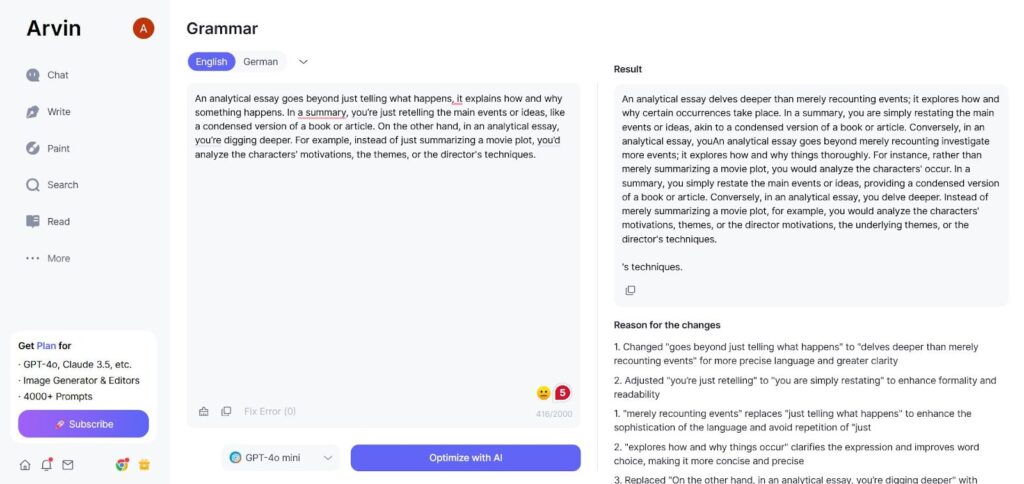
- Clarity: Are your ideas clear and easy to understand? If something sounds confusing or complicated, try rephrasing it.
- Missing Evidence: Did you back up all your points with strong evidence? If some arguments feel weak, add more facts or examples to support them.
Format Your Essay Properly
Now that your essay is polished, make sure it looks good. Follow the required style guide (like MLA or APA) for things like:
- Citations: Make sure all your quotes, facts, and ideas from other sources are properly cited.
- Spacing and Fonts: Double-check that the line spacing, font type, and font size match the guidelines. This helps make your essay easy to read and gives it a professional look.
Formatting might seem small, but it shows you’ve put thought and care into your work. Plus, teachers or professors often expect a certain format, and following it helps you avoid losing points.
What If You’re Short on Time?
Sometimes you have to write an essay in a rush (life happens to everyone!). Focus on these key things if you want to know how to write an analytical essay if you’re on a tight deadline:
- Your Thesis: Make sure your thesis statement is clear and strong. It’s the heart of your essay, so make sure it’s easy to find and understand.
- Main Points: Focus on the most important arguments in your essay. Don’t worry too much about adding lots of extra details. A clear, simple essay with solid points is much better than one that’s rushed and confusing.
If you’re really short on time, don’t stress about getting everything perfect. Just aim for clarity, and you’ll be good to go! You can also use AI tools for writing essays to take off some load from your shoulders, or use these ChatGPT prompts for essay writing.

FAQs About How To Write An Analytical Essay
Here are a few of the most frequently asked questions about how to write an analytical essay:
What’s the difference between an analytical essay and a summary?
An analytical essay goes beyond just telling what happens, it explains how and why something happens. In a summary, you’re just retelling the main events or ideas, like a condensed version of a book or article. On the other hand, in an analytical essay, you’re digging deeper. For example, instead of just summarizing a movie plot, you’d analyze the characters’ motivations, the themes, or the director’s techniques.
How long should my analytical essay be?
The length of your analytical essay usually depends on the assignment guidelines given by your teacher. Typically, analytical essays are about 3 to 5 pages long, which translates to around 750 to 1,500 words. If you’re unsure about the length, always check with your teacher or professor. Some people are always looking for ways on how to make an essay longer, even if they have met the desired word count. However, you should aim for a thorough analysis that is clear and complete, without being overly long or short.
Can I give my opinions in an analytical essay?
Yes, you can absolutely give your opinions in an analytical essay, but they need to be supported by evidence. This means you should back up your thoughts with facts, quotes, or examples from the source you’re analyzing. For instance, if you’re writing about a book, and you believe a character is selfish, you’d need to point to specific moments in the story that show this selfish behavior. Your opinion should feel grounded in what you’re analyzing, not just a random thought.
What if I don’t have enough evidence?
If you feel like you don’t have enough evidence to support your analysis, you may need to do more research or reconsider your topic. Start by looking for more sources (books, articles, or credible websites) that provide additional information on the subject. If that’s not possible, consider narrowing your topic to focus on a smaller aspect that you can analyze in more depth.
Can I analyze something visual, like a painting or movie?
Definitely! Analyzing something visual, like a painting, movie, or photograph, can be a very effective way to write an analytical essay. Focus on different aspects such as themes, techniques, composition, color choices, and emotional impact. For example, if you’re analyzing a painting, you could discuss how the colors used in the artwork make you feel, or what the subject matter tells you about the time period in which it was created.
Take Home Message
Congratulations! You’ve now unlocked the secrets of how to write an analytical essay. From crafting a spot-on thesis to breaking down evidence like a detective, you’re now armed with everything you need to write an essay. And if you get some help from Arvin AI, you’ll have an essay that’s not just good but great. So, grab your pen (or keyboard) and start analyzing like a pro. Your A+ essay awaits!

